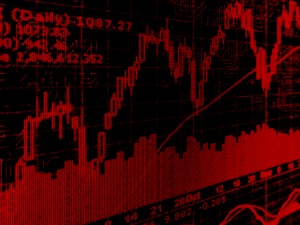Tail relation between return and volume in the US stock market: an analysis based on extreme value theory
|
||
|
Using daily data of the S&P 500 index from 1950 to 2014, we investigate the relation between return and transaction volume in the statistical distribution tails associated with booms and crashes in the US stock market. We use extreme value theory (peaks-over-threshold method) to study the extreme dependence between the two variables. We show that the extreme correlation between return and volume decreases as we consider larger events in both the left and right distribution tails. From an economic viewpoint, this paper contributes to a better understanding of the activity of market participants during extreme events. Our empirical result is consistent with the economic explanation by Gennotte and Leland (1990) of extreme price movements based on misinterpretation of trades by market participants.
|
||
 |
François LonginFrançois Longin has been a professor of finance at ESSEC Business School since 1994. He pursues a career in banking and finance by allying research, consulting and training. François Longin graduated from the PhD Program at HEC School of Management in 1993 and his thesis was about extreme movements in financial markets such as stock market crashes. For many years he has been working on the applications of extreme value theory to financial markets: the statistical distribution of extreme returns, the setting of margins in derivatives markets, the impact of financial regulation on market volatility, the improvement of portfolio management techniques during highly volatile periods, the computation of value at risk for market positions, the definition of catastrophe scenarios for stress testing… His research has been applied by financial institutions in the risk management area (market, credit and operational risks). He received the Chicago Board of Trade award for his research on derivative products. Some of his research works can be found in scientific journals such as The Journal of Finance, Journal of Business, Review of Financial Studies, Journal of Banking and Finance, Journal of International Money and Finance, Journal of Futures Markets, Journal of Derivatives et Journal of Asset Management.François is currently a financial consultant and his domain of expertise covers risk management for financial institutions, portfolio management for asset management firms, financial management for non-financial firms and wealth management for individuals. He also participates to the SimTrade project, which is both a pedagogical and research tool on financial markets. |
|
| “A French proverb says: «C’est dans l’adversité qu’on reconnait les vrais amis.» that you could translate in English by «You can only tell who your friends are when you are in trouble.» I strongly believe that we can learn a lot about how financial markets work (or do not work) from crises.” | ||
 |
Giovanni PagliardiGiovanni Pagliardi is currently enrolled in the PhD program in Finance at ESSEC Business School, Paris. He holds a B.Sc. in Banking and Finance and a M.Sc. in Finance and Risk Management from University of Brescia, Italy. For his paper about the return-volume relationship in the tails, Giovanni was awarded the prize for the “Most innovative research” at the ESSEC PhD Poster Session 2014. The goals and findings of the paper have been reported by the media in a dedicated interview at the Huffington Post France at Le Monde Paris. In addition to extreme events, his current research is focused on time-series econometrics, forecasting and their applications to trading. |
|
| “I am particularly passionate about risk management. I am truly convinced of the remarkable relevance of extreme value theory, and hence of the modern quantitative risk-management techniques enabling us to measure the impact of extreme events. This topic turns out to be critical and essential for all the three corners of the triangle representing the financial world: academics, practitioners and regulators.” |
 |
 |

